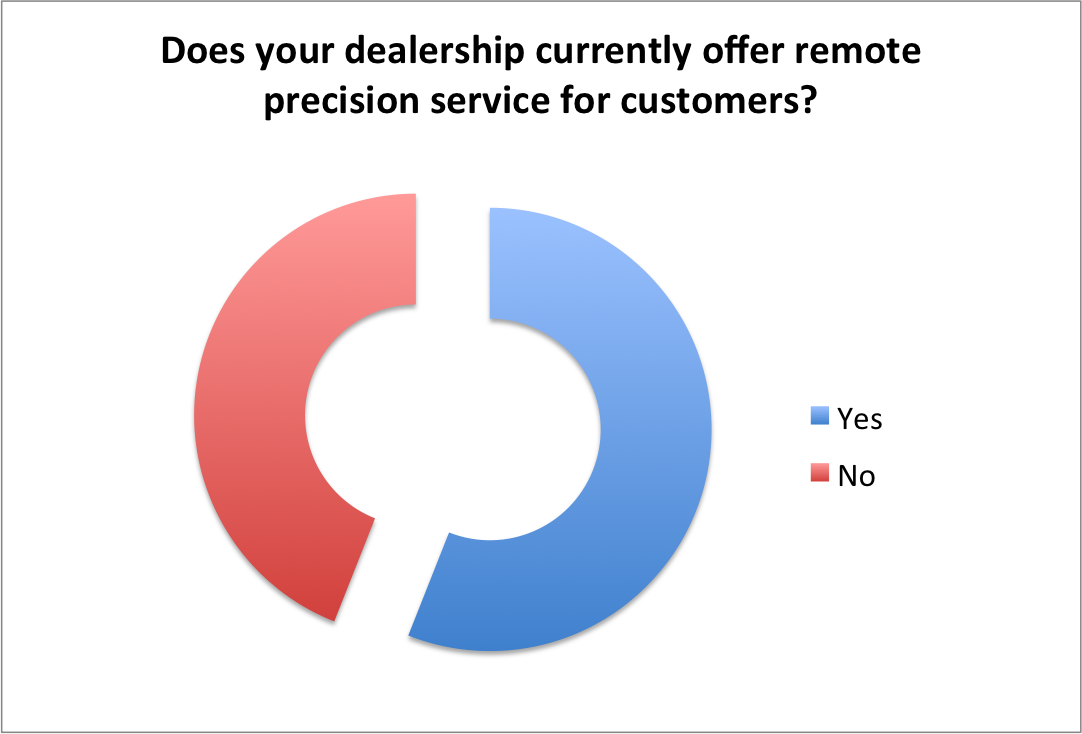Reducing cellular ‘dead zones’ can increase the effectiveness of remote service.
Telematics is gaining traction with farm equipment dealers and the majority of respondents (56%) to the monthly poll question on PrecisionFarmingDealer.com indicated that they currently offer remote precision service for customers.
 Being able to wirelessly link to a customer’s fleet of farm equipment and monitor machine performance or troubleshoot a precision problem from the dealership can help reduce travel time and improve efficiency for technicians.
Being able to wirelessly link to a customer’s fleet of farm equipment and monitor machine performance or troubleshoot a precision problem from the dealership can help reduce travel time and improve efficiency for technicians.
But many dealers are still working out the logistics and structure of telematic offerings for customers. One consideration to take into account before launching a remote service package is the cellular signal strength in the area, says Laine Matthews, director of business development for Wilson Electronics, a manufacturer of cellular signal boosters.
Farmers in extremely rural areas often encounter “dead zones” where cellular signals fade and this can diminish the value of remote service for the customer and the dealership.
“The whole reason for these telematic solutions is so technicians don’t have to be running around all the time,” he says. “But if there isn’t a connection from the field to the office, they are flying blind.”
In many case, Matthews says dealers probably aren’t thinking about cellular signal strength beyond the use of a cell phone. “Most people probably aren’t aware there’s a solution to boost cellular signals,” he says.
But some dealers are incorporating cellular booster technology into their telematic offerings.
Wilson Electronics, based in St. George, Utah, recently worked with an equipment dealer to install cellular signal boosters on 300 combines, which the dealer then sold as part of its remote service package on the combines.
One end of booster connects to an external antenna which draws a stronger signal from the cell tower and the other end connects to a port on the cellular modem to deliver the signal. The booster also amplifies the outgoing signal to the tower.
“This dealership wanted to set up a new remote service to measure machine temperature and oil pressure in the combines, but they realized that in their area, they didn’t get a good enough cell connection to manage that information,” Matthews says. “We installed the signal boosters to connect each of the cell modems and increase the range of coverage.”
The increased range of coverage varies, depending on the topography of the land, Matthews says, but cutting down on dead zones can help dealers and customers get more out of their telematic service.
Cellular booster technology in precision farming is relatively new, Matthews says, and it will take time for adoption.
But he does see an opportunity for dealers to offer these products as a value-add in conjunction with remote service plans.
“Equipment is expensive and having these kinds of products make that precision technology work better,” Matthews says. “It all comes down to reducing expenses, reducing down time and improving efficiency.”



![[Technology Corner] A Big Step Forward for Interoperability & Data Sharing](https://www.precisionfarmingdealer.com/ext/resources/2025/12/12/A-Big-Step-Forward-for-Interoperability--Data-Sharing.webp?height=290&t=1765565632&width=400)


